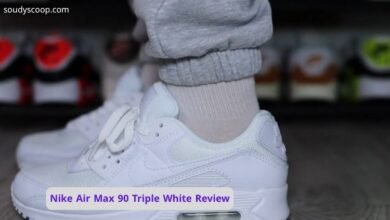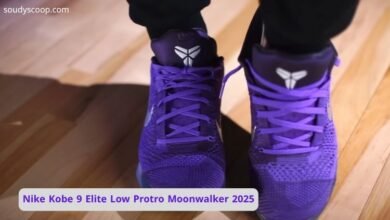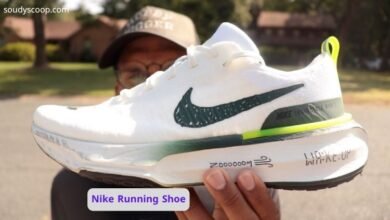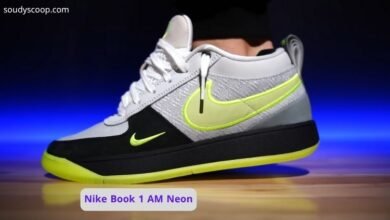Nike Kobe 3 Protro Performance Review: My In-Depth Experience
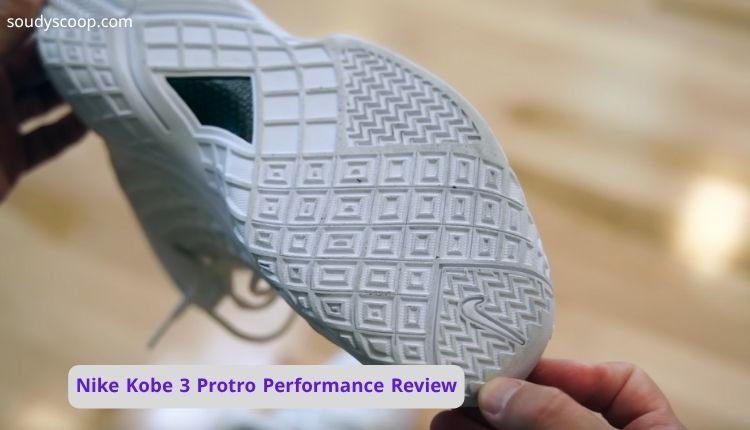
When I first unboxed the Nike Kobe 3 Protro, I was filled with anticipation. As someone who has always admired Kobe’s line but never had the chance to play in the original 3s (or even the 2s), this Protro release was a significant moment for me.
Table of Contents
I’ve heard countless stories about the legendary performance of Kobe’s earlier models, and the 3s, in particular, held a special allure.
However, my initial experience with these shoes was far from what I expected, starting out incredibly rough. This journey perfectly illustrates why a proper Nike Kobe 3 Protro performance review cannot be based on a single wear or a couple of hours on the court.
These shoes are a prime example of performance improving dramatically with each session, evolving from a challenging wear to something I’ve grown to genuinely appreciate, almost love.
A Rocky Start: The Importance of Breaking Them In
My excitement quickly turned into concern on my very first outing. The moment I laced them up and stepped onto the court, I felt a noticeable stiffness and an almost awkward sensation underfoot. It was during my first defensive play that disaster nearly struck. I almost rolled my ankle, a truly frightening experience that left me questioning my decision to try these.
I immediately took them off, threw them back in my bag, and frankly, I thought about shelving them indefinitely.
But something kept telling me to give them another chance. And I’m incredibly glad I did.
Key points about break-in:
- This shoe absolutely requires a significant break-in period.
- It’s built differently from many modern basketball shoes, particularly in its tooling.
- What felt awkward and even dangerous at first eventually transformed into a reliable and comfortable setup.
- The more I wore them, the better they felt, proving that some shoes simply need time to adapt to your foot and playing style.
Traction: Sticky When It Matters
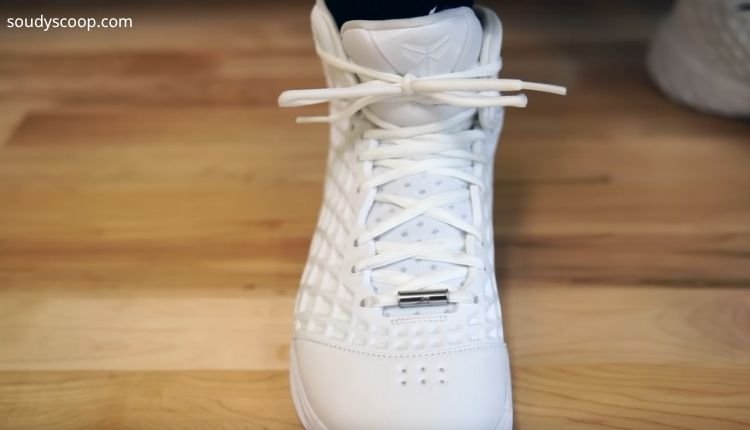
One of the most crucial aspects of any basketball shoe is its traction, and for this Nike Kobe 3 Protro performance review, I’m happy to report that it’s fantastic, especially once broken in.
The outsole features a modified diamond pattern, which was a point of discussion in the initial reveal video. From what I’ve gathered from those who played in the original Kobe 3s, traction was a polarizing topic – some found it awful, while others swore by it.
Since I don’t have the original experience to compare, I can only speak to the Protro, and my personal experience is overwhelmingly positive.
My Traction Experience
- The grip, particularly in the forefoot area, is incredibly solid.
- I felt confident making quick cuts, changing direction, and stopping on a dime.
- Would I take these outdoors? Absolutely. While I wouldn’t use the exact same pair for both indoor and outdoor play, I would feel completely confident using a pair as an outdoor shoe.
Currently, they serve as my indoor choice, and they perform admirably.
Outsole Design Quirk
My only initial issue with traction wasn’t really a traction problem at all, but rather related to the outsole’s design.
- The Kobe 3 Protro utilizes a rubber cupsole, similar to classic models like the Air Jordan 1 or Dunks.
- This differs from the softer, more pliable cupsoles found in some modern shoes like the Air Jordan 39 or 40.
- The Kobe 3 Protro’s cupsole feels sturdy, which initially made the shoe feel slightly clunky.
The roundedness of the outsole caught me off guard during that first defensive play, causing me to nearly roll my ankle. This wasn’t due to lack of grip, but rather my footwork adapting to the shoe’s profile.
“Read Also: Nike Kobe 9 Elite Low Protro Moonwalker“
Cushioning: From Stiff to Bouncy Bliss
The cushioning system in the Nike Kobe 3 Protro is another area with significant updates from the original.
- The original featured Phylon with heel and forefoot Zoom Air.
- The Protro incorporates Kushlon 3.0 as the main bed of foam within the cupsole, topped with a full-length Zoom Strobel unit.
Initial Feel
Initially, the cushioning felt strange:
- Not plush or low-to-the-ground as I expected.
- I felt elevated, particularly in the heel.
- Transitioning from current low-profile models (like Ja 3s or Shay 1s) was difficult.
I honestly wish they had tweaked this aspect by shaving down some midsole thickness, bringing the foot closer to the ground.
Break-In Transformation
However, just like the traction, the cushioning system comes alive after the break-in period.
- What started out stiff became remarkably bouncy.
- Now, the bounce is undeniable and fun.
- It feels more energetic than Air Jordan 39 or 40, which felt too soft and mushy.
Closest comparison: Air Jordan 12s after break-in – firm, but with that classic Zoom Air bounce many players love.
The Upper: Durable, Breathable, but a High-Top Conundrum
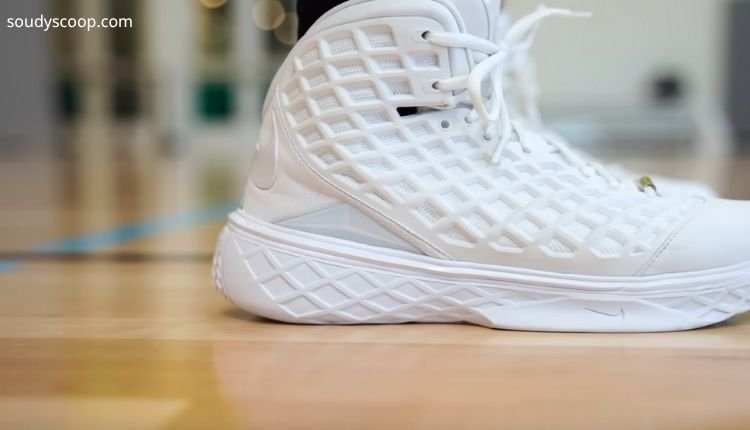
The upper of the Kobe 3 Protro combines different materials:
- Toe cap: synthetic leather, flexible and durable.
- Main body: rubberized waffle-like texture (snakeskin look).
- Strong, durable, and breathable due to mesh underneath.
Pros of the Upper
- Barely shows wear and tear.
- Surprisingly breathable.
- Very durable, making it long-lasting.
Cons of the Upper
The main drawback for me personally is the high-top design:
- Feels restrictive compared to low-tops.
- Ankles protest immediately when switching from low models like Ja 3s or Donovan Mitchell Issue #7s.
- Feels like boots at times.
I prefer low-cut models for mobility and comfort, so I’m excited for the eventual low-cut Kobe 3 Protro release.
“Read Also: Nike Book 1 AM Neon Review“
Support & Fit: Solid Foundation, Minor Quirks
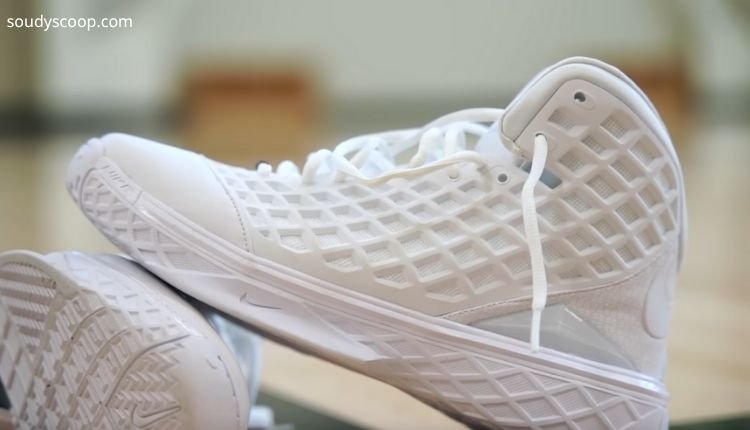
Overall, the support offered by the Nike Kobe 3 Protro is solid, and the fit is generally great.
Support Features
- Fairly wide platform in the forefoot = good stability.
- Strong heel counter = secure fit.
- Carbon fiber midfoot plate adds rigidity (though some debate remains about whether it extends fully to the forefoot).
Quirks about it
- Rounded heel shape caused my near-ankle-roll during the first wear.
- A small outrigger could have helped, but it would alter the design.
- High-top upper feels restrictive if you prefer full ankle mobility.
Sizing: True to Size for Most
When it comes to sizing, I went true to size, and that worked perfectly for me.
- For most players: stick to your usual size.
- For wide feet: try them on before buying if possible, due to the cupsole pressing on the foot.
My Foolproof “Finger Method”
- Push your foot all the way to the front of the shoe, toes touching the edge.
- Insert one finger behind your heel.
- Ideal fit: one finger fits comfortably.
- Too tight: one finger fits but feels snug.
- Too big: more than one finger fits = heel slippage risk.
This simple method works across brands and helps account for size variations.
“Read Also: Air Jordan 3 El Vuelo“
Final Thoughts: A Solid Performer, with Patience
In conclusion, the Nike Kobe 3 Protro is a very solid performer, but it demands patience.
- Requires a break-in period for both traction and cushioning.
- Once broken in, traction is fantastic and cushioning is bouncy.
- High-top design and elevated feel might not be for everyone.
- Upper durability is exceptional.
I play in these shoes often now, and I wouldn’t do so if I didn’t genuinely like them. They’ve earned their place in my rotation after such a rocky start.
If you’ve played in the originals or the Protros, I’d love to hear your comparative thoughts, especially about the break-in period and initial feel.
Thank you for reading my in-depth Nike Kobe 3 Protro performance review. I hope this helps you make an informed decision about these unique basketball shoes.
As a dedicated footwear reviewer, I have spent years analyzing and testing athletic shoes across every category, from high-performance running sneakers to lifestyle-inspired basketball silhouettes. My work goes beyond simple first impressions; each review is built on a foundation of hands-on experience, thorough research, and attention to the details that matter most to athletes and casual wearers alike. I aim to bridge the gap between brands’ marketing claims and real-world performance, giving readers an honest, balanced perspective.
My writing style combines technical evaluation with an accessible tone, so both professionals and everyday enthusiasts can understand the strengths and weaknesses of each shoe. Whether discussing midsole cushioning technology, outsole traction, or upper material breathability, I break down complex features into practical insights. Readers trust my reviews because they know I highlight both the benefits and potential drawbacks, helping them make more confident purchasing decisions.
Over time, my work has evolved into a comprehensive resource for anyone seeking guidance on athletic footwear. I regularly compare new releases with previous models to highlight improvements or missed opportunities, while also exploring how different shoes fit specific activities—such as marathon training, weightlifting, or casual streetwear. By staying updated with industry trends and listening to community feedback, I ensure that my reviews remain relevant, informative, and genuinely useful.
Ultimately, my mission is to provide clarity in a crowded market. With countless options available, choosing the right pair of shoes can feel overwhelming. Through in-depth, unbiased, and engaging reviews, I strive to make that decision easier, equipping readers with the knowledge they need to find footwear that truly matches their performance goals and personal style.
